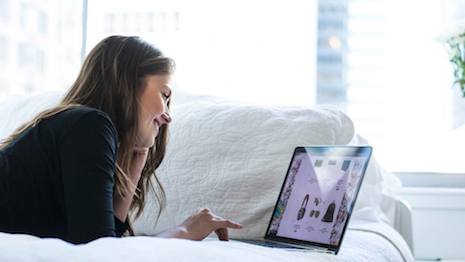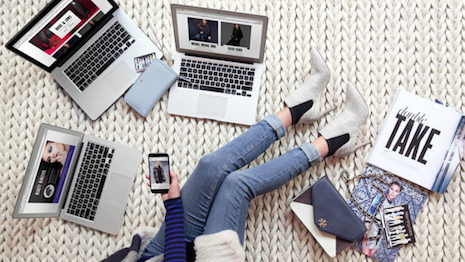- About
- Subscribe Now
- New York,
June 23, 2017

 As online shopping grows, so does fraud Image credit: Saks Fifth Avenue
As online shopping grows, so does fraud Image credit: Saks Fifth Avenue
High-end fashion brands are being too stringent when it comes to detecting fraudulent online orders and missing out on potential revenue, according to a new report from Riskified.
An industry report from the fraud prevention company is showing that even though ecommerce has been an established norm for a significant amount of time, high-fashion is still behind and letting significant revenue slip by. Almost 55 percent of orders that the fashion industry has rejected as “fraudulent” have likely been categorized so by mistake.
“The key takeaway of the report is that fashion merchants are unnecessarily declining good orders and leaving valuable revenue on the table,” said Emilie Grunzweig, senior fraud analyst at Riskified, Tel Aviv, Israel. “For example, many merchants turn down orders with an AVS mismatch, but in a world of international sales this isn’t a good indicator of fraud.
“They haven’t adapted, and it’s costing them revenue,” she said. “And international shopping is increasing, so the penalty will only get larger.
“We safely approve 55 percent of orders that most fashion merchants would otherwise reject, and that can make a huge difference to the bottom line. It’s important that merchants look at the full picture of their orders rather than make a decision based on outdated rules.”
Overly cautious
Many high-end fashion retailers look to the Address Verification System, which brands use to detect whether or not a purchase is fraudulent.
This cross-references between the address of the purchaser and the address on file for their credit card. If they do match it will appear as fraudulent.
 Image courtesy of Bloomingdale's for its online shopping
Image courtesy of Bloomingdale's for its online shopping
However, since ecommerce is growing overseas dramatically, this system is outdated. Many orders from overseas will appear as fraudulent with AVS.
Riskified also found that while the industry standard for retail is that mobile orders are more likely not to be fraudulent, this is not true for higher end products. Those purchasing luxury fashion want to take time to make their decision, which leads to most purchasing on a desktop.
Many purchases coming from mobile for high price fashion items are fraud.
However, most fashion orders are in fact safe. Riskified has found that 97.6 percent of all fashion orders are approved as secure.
Because those committing fraud have less to worry about in terms of high prices, the most fraudulent purchases are made in higher priced items. As a result, 98.2 percent of orders in the mid-tier price range are approved, as opposed to only 95.2 percent for the higher priced tier.
The length of an email lifetime has a direct correlation to fraud. Orders made with an email address created for more than two years has an average approval rate of 95 percent.
 Fraud occurs most on mobile devices, says Riskified. Image courtesy of Yoox
Fraud occurs most on mobile devices, says Riskified. Image courtesy of Yoox
But only 80 percent of high-end product orders are approved with email addresses less than three months old and only 65 percent for moderately price orders.
Additional insight
As credit card security is a substantial worry for today’s customers, every $10.50 out of $100 of luxury goods is at risk for fraud as per PYMNTS.com’s Global Fraud Attack Index.
Fraud affects a wide range of retailers, and luxury is not immune to that, and within the part four quarters it has become an even bigger issue with a 137 percent increase. During the first quarter alone there were 34 attacks for every 1,000 transactions overall and the problem has since been growing (see more).
The rate of fraudulent transactions in the luxury goods category has declined 8.4 percent in 2016, but the industry remains one of the hardest hit, according to a recent report from Forter.
It may be more difficult to have a high-value order approved, but if fraudsters manage to get through, luxury goods are easy to move and fetch appealing resale prices. The increasingly sophisticated attackers are not deterred by a failed attempt, making it necessary for luxury brands to maintain vigilance (see more).
“There are a number of places where orders placed in fashion are unique to the ecommerce space,” Riskified's Ms. Grunzweig said. “Here's an interesting one - in almost all industries, orders placed through a mobile device are safer than orders placed on a desktop or laptop computer.
“It’s the opposite for high-end fashion,” she said. “If you think about the shopper, that probably makes sense.
“A high-end fashion purchase is a big-ticket item, and it isn’t bought on a whim. Merchants have to make sure they’re adapting their systems to match the behavior of their shoppers in the channels they’re using.”
Share your thoughts. Click here